Fourteen months ago a shamanistic shrine in Juksung Village, Jeju Island, South Korea was deliberately desecrated. Lunar January, the ceremonial period when the elderly make offerings is about 6 weeks away. So far, there have been no efforts to repair the shrine and little media coverage. I interviewed locals over the period of a year. I will be telling their story as part of a new edit of my documentary project on Jeju Island’s shrines.
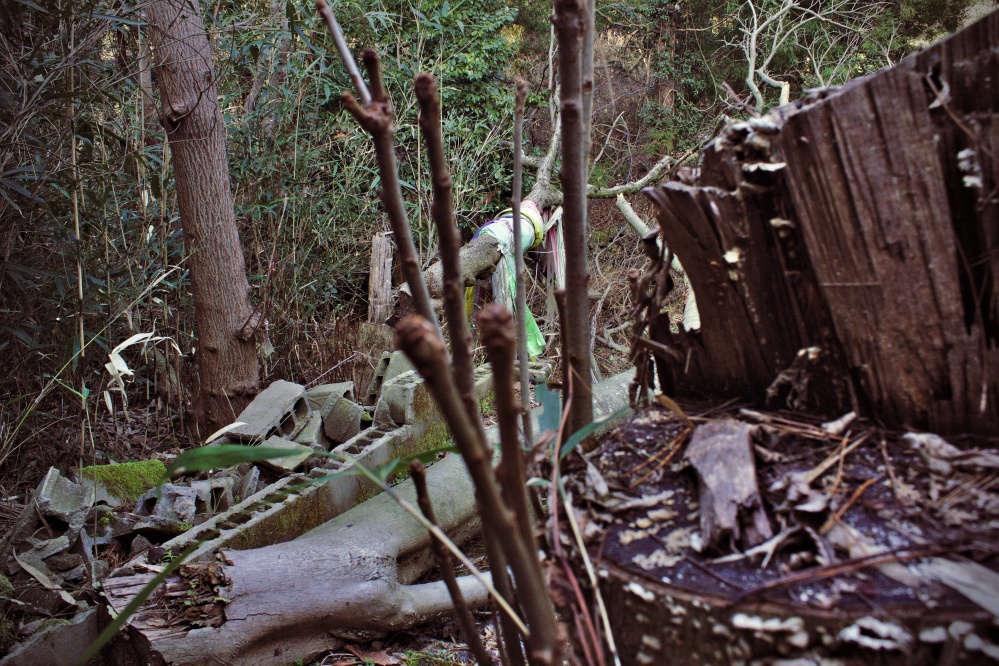
‘Sulsaemit’ Bonhyang Shrine, the seat of the goddess ‘Go Grandmother’ and the grandfather god, Kim Younggam, is certainly one of Jeju’s majestic shrines. Located is what was Juksung Village before the tragic events of the April 3rd, 1948 uprising, where some 30,000 villagers accused of being communist sympathizers were massacred across the island and many inland villages were burnt, the shrine occupies a peaceful, secluded area atop a small rise in the land. Spring water runs directly under the shrine and collects in a number of small pools that were once used by villagers for washing and bathing in times past. Locals, once displaced by the events of 1948, but still living nearby, can recall making use of the springs. A thick bamboo forest surrounds the shrine. It’s easy to see why the people of Jeju have long considered Sulsaemit to be a powerful shrine. When you pass by the old bathing pools and enter the narrow forest path that leads to the shrine, catching glimpses of prayer cloth and other colorful offerings through low hanging branches and brush , you become full of anticipation– no doubt, there are physiological responses associated with the crossing of certain thresholds, the boundaries of religious places, that occur. While all of Jeju’s shrines invoke such responses, there is something truly special about Sulsaemit. Crossing its threshold is to temporarily enter a different world, a spiritual world, and this isn’t just flowery language but a phenomenon reported to me by shrine-goers, shamans and secular researchers on many occasions during my three year exploration of Jeju’s shrines. Everyone in the region of Jeju City knows that Sulsaemit Shrine is a ‘senchari‘–‘a strong seat of the gods’.
김영감과 고씨할망이 좌정해 있는 설새밋 본향당은 제주의 전설적인 당이다. 1948년에 발발하여 3만이 넘는 무고한 제주도민들의 삶과 그 터전을 앗아간 4.3사건의 여파속에서도, 죽성마을의 외딴 곳 구석에 자리잡은 이 당만은 파괴되지 않고 지켜져 왔다. 당의 밑부분을 통과하며 마을 곳곳에 솟아나는 샘(용천수)는 과거 마을사람들에게 중요한 생활수로 쓰여져 왔다. 1948년이후 마을의 많은 부분이 파괴되었으나, 아직도 주변에 거주하는 마을사람들은 샘에 관한 기억을 간직하고 있다. 커다란 대나무숲으로 둘러쌓인 설새밋당에 직접 가보면, 왜 제주사람들이 이 당을 큰당으로 모셔왔는지 그 기운을 짐작할 수가 있다. 과거 마을사람들에게 목욕탕으로도 쓰였다는 작은 용천수탕을 통과하면 당으로 향하는 좁은 숲길이 있다. 그 길 끝으로 사람들이 기도를하며 걸어놓은 천조각과 형형색색의 기도용품이 놓여져 있는 것이 보인다. 입구로 들어가며 마음가짐이 엄숙해 지는 것을 느끼는 것은 결코 이상한 일이 아닐 것이다. 다른 제주의 당에서도 비슷한 기분은 들지만, 설새밋당에는 무언가 특별한 분위기가 느껴진다. 설새밋당의 문턱을 넘으며 마치 새로운 세상과 접하는 느낌을 받는 것은 비단 나만의 개인적인 감정이 아니다. 당을 찾는 이들, 심방들은 물론, 종교학을 연구하는 연구자들 역시 나와 같은 느낌을 실재로 받은 것을 기술하고 있을 정도다. 설새밋당은 실재로, 제주의 당중에서도 “센 자리”로 알려져 있다. 센 자리, 즉, 강한 신들이 앉아있는 곳이라는 뜻이다.
Sulsaemit Desecrated
설새밋당의 파괴
Sometime in December of 2013, some fourteen months prior to the writing of this post, Sulsaemit shrine was systematically destroyed. Not only were four of its five hackberry trees cut down with a chainsaw, including the two shinmok (god trees) that stood at the main alter, but the concrete foundation of the shrine was smashed to pieces as well. The assailants made sure to destroy offerings too. Bottles of soju liquor, a common feature in shrines, were deliberately reduced to shards smaller than a fingernail. Also, the concrete surrounding the gwenmun or small doors opened at the beginning of shrine rituals in Jeju, were torn away leaving the earth below them exposed. The assault on the shrine was obviously done in a deliberate fashion, so completely, as to leave no question about the severity of the message being sent
2013년 12월의 어느날, 즉 내가 이 글을 쓰기 14개월 전에 설새밋당은 파괴되었다. 당을 둘러싼 다섯 그루의 팽나무가 톱으로 절단된 것은 물론, 두 그루의 신목 앞에 있던 콘크리트 구조물 역시 산산조각이 난 상태였다. 분명히 그것은 당에 기도를 하러 오는 사람들의 신앙행위 조차도 파괴시킨 것과 다름 없었다. 당에 가면 쉽게 볼 수 있는 소주병들 역시 손톱보다 작게 산산히 깨진 채 놓여있었다. 게다가 콘크리트로 만들어진 담장 혹은 작은문(괸문이라 불리우며, 의식이 있을 때 열어 놓는)들 역시 파괴되어 그 밑에 있던 흙들이 다 파헤쳐져 있었다. 당은 누군가의 의도로 인해 처참하게 파괴되었다. 누군가가 마치 어떠한 메세지를 남긴 것처럼 말이다.
But what is message? The motivation? Who was responsible?
그렇다면 과연 그것은 어떤 메세지였던 것일까? 그리고 어떤 동기가 이러한 파괴를 불러일으켰는가? 누구에게 책임을 돌려야하는가?
Having spent two years exploring what role Jeju’s shrines play in the lives of island residents, there was no way I was going to leave these questions unanswered. I, too, like many islanders, both religious and secular, who heard news of the destruction, was offended to my core for reasons I will elaborate on.
2년간 제주의 당들을 돌아다니며 제주사람들에게 당이 어떠한 의미를 지녀왔는지를 조사해온 나에게, 이번 문제는 그냥 넘어갈 만한 성격의 것이 아니었다. 비단 나 뿐만 아니라 무속신앙을 믿는 사람이나 그렇지 않은 사람들에게 있어서도 이번 사건은 매우 불쾌한 일이었기에, 내가 그에 관해 정밀하게 조사할 필요성을 느꼈다.
Odeung Village: The Obvious Place to Start
Odeung Village is surprisingly close to the city, a mere few kilometers from Jeju’s rapidly developing Aradong neighborhood. I say surprisingly because the village itself is still perfectly a farming community where locals cultivate tangerines, buckwheat, pumpkins and onions. The elderly gather at the senior center for meals, speaking to one another in Jeju-eo, Jeju’s native, endangered language. I quickly learned by inquiring around the area of Sulsaemi shrine that the people who had survived the massacre of 1948 in Juksung and nearby Godasi village, had been relocated to Odeung Village. It seems about half of the residents I spoke with had come from the destroyed villages further up the mountain.
오등동 마을; 시작을 위한 장소
오등동은 제주시에서 무척이나 가깝다. 최근 많은 개발이 이루어진 아라동 지역에서 불과 몇 킬로미터 밖에 떨어지지 않은 곳이다. 하지만 놀랍게도 마을사람들은 아직도 거의 모두가 농업에 종사하며 귤과 메밀, 호박, 양파등을 경작하며 생활한다. 노인들은 식사시간이 되면 노인정에 모여 함께 시간을 보내곤 한다. 나는 설새밋당 주변에 거주하는 어르신들을 찾아뵙고, 4.3사건에 죽성마을과 그 근방에 있는 고다시 마을에 있던 사람들이 오등동 마을로 이주를 해 왔다는 사실을 쉽게 알아낼 수 있었다. 그러니 이 마을에 계신 어르신들은 대부분이 4.3때 파괴된 이웃 마을이나 중산간마을에서 새로 이주해 온 사람들인 것이다.
The women in Odeung described to me very openly their childhood experiences of fleeing Juksung and Godasi villages in 1948. Several seniors shared their memories of seeing men and women executed in cold blood. One woman, who was just a child of perhaps eight or nine at the time commented, “I saw dead wives, grandmothers, babies even.” She added, “They even killed the cows–the police did. I saw dead cows with twisted necks.” It struck me that to a child, this detail had been especially bewildering. The army and police had destroyed all the people in the women’s lives, all their possessions. They had let some of the younger women go. Following the massacre the only one thing that remained in Juksung village, was Sulsaemit shrine. Despite the fact that no one native to the village would return to reside, the original residents still would make the trip up the mountain to worship at their native shrine.
오등동의 한 할머님은 내게 죽성마을과 고다시마을에 1948년 이후 닥친 상황들에 관해 친절하게 설명해 주었다. 몇몇 어르신들은 당시 많은 남자와 여자들이 처형당하는 것을 본 적이 있다고도 말했다. 당시 8-9살 정도 되었었다는 한 할머님께서는 “죽은 아낙들, 할머니들, 아기들도 있었어” 라고 하셨다. 게다가 소도 죽였다. 경찰이 그랬다고 한다. 목이 뒤틀려서 죽은 소를 본 기억도 있다고 하셨다. 어린꼬마의 눈으로 보았다고 하기에는 너무나 참담한 기억이다. 군인과 경찰들은 마을 사람들의 재산은 물론 마을 여성들을 겁탈하기도 했다. 이러한 참혹함 속에서도 죽성마을의 설새밋당만큼은 파괴되지 않고 남아있었다. 비록 지금 죽성마을에는 원래 마을에 살던 원주민은 없지만, 다른 마을로 이사를 간 원주민들도 설새밋당에 기도를 올리러 매해 찾아오곤 했다.
When I inquired about who had destroyed the shrine, one resident emphatically said, “People who believe in Jesus did it.” A nearby woman added, “Those people came from outside of Jeju, a person from Jeju wouldn’t have done that. We pray there.” I asked a few other women if they still believed in the local deities, the Door God, the Hearth Goddess, the Mountain God, the Sea God, the tutelary shrine gods–“Are you kidding,” said one of the women in a voice that seemed to dismiss the question as a stupid one, “who doesn’t believe? Sure, we believe.” Initially, I was worried about asking about Sulsaemit shrine’s destruction, worried that there might be someone involved in its destruction present at the senior center, but people spoke openly and even praised me for including the story in my documentary.
사람들에 나는, 과연 누가 당을 파괴했느냐고 물었다. 그러자 한 사람이 “예수를 믿는 사람이 그랬다”고 말했다. 덧붙여 옆에 있던 한 여성은 “육지에서 온 사람들이 그랬을 거다. 제주사람들은 이런 짓은 하지 않는다. 우리는 여기서 기도를 한다” 고 말했다. 나는 마을 여성들에게 아직도 제주의 지역신(문전신, 건강을 다스리는신, 산신, 해신, 당신)을 믿느냐고 물었다. 그러자 한 여성이 장난하냐는 눈빛으로 나를 보며 “당연히 믿지! 누가 안 믿겠어?”라고 말했다. 애초에 나는 설새밋당의 파괴에 관한 질문을 하는 것이 걱정스러웠었다. 노인정의 누군가가 파괴에 연관되어 있진 않을까, 걱정스러웠기 때문이다. 하지만 사람들은 의외로 개방적이였으며 내가 찍고 있는 다큐멘터리에 관심을 보여주고 응원해주기까지 했다.
That day at the senior center, I quickly confirmed something I had heard my first morning in Juksung, from people who had come to live in the area after 1948. This wasn’t the first time the shrine had been destroyed. Shortly after the gruesome events of 1948 a protestant preacher who came to live in the area had cut down the original trees in the shrine, trees that had most likely, considering the description of them I was given, been growing for hundreds of years. As determined as he may have been, it hadn’t been so easy to eradicate the native religion. After he cut the trees, the preacher contracted a terminal disease and died. Anecdotes about people who have mysteriously fallen ill after disturbing holy trees in Jeju aren’t all that uncommon. This particular episode has become a piece of lore, that while isn’t part of the official ‘Bonpuli’ of the shrine, (a Bonpuli is a myth that tells the origin of the gods residing in a shrine) is certainly something people bring up when talking about Sulsaemit. In the early 1950s the villagers planted new trees, the very trees that were recently cut, and continued making the trip up the mountain to their former village to pray and perform ceremonies, especially in lunar January.
처음 죽성마을을 찾았던 아침에 그곳에서 만난 분에게 들었던 한가지 사실을, 나는 그날 노인정에서 다시금 확인 할 수 있었다. 1948년 이후에 이 마을로 옮겨 살았다는 분이 해 주신 말씀이다. 그에 말에 의하면, 이러한 파괴가 이번이 처음은 아니라는 사실이다. 끔찍한 4.3사건이 마을을 휩쓸고 지나간 얼마 후, 기독교의 한 목사가 마을에 와서는 당에 있던 몇백 년된 고목들을 잘랐다고 한다. 하지만 그 후 얼마 안 가 목사가 알지 못할 병에 걸려 죽었다는 이야기다. 신목을 자른 이가 시름시름 앓다가 죽었다는 이야기는 사실 제주에서는 그다지 특별한 일화는 아니다. 비록 본풀이(각 당의 신화적 모태가 되는 이야기)에 포함되는 이야기는 아닐지언정 이러한 일화는 입에서 입으로 전해내려 왔고, 설새밋당에 관해 이야기할 때 사람들 입에 자주 등장하는 에피소드다. 1950년대 초반에 마을사람들은 당에 새로운 나무를 심었고, 음력 정월마다 잊지 않고 그곳을 찾았다. 그 당의 나무가 얼마전 잘려나간 것이다.
I visited two women from the senior center, sister-in-laws, who fled Juksung in 1948. They shared their photo albums.
나는 노인정에서 만난 두명의 여성을 찾아갔다. 둘은 1948년에 죽성마을로 온 친척지간이다. 앨범을 꺼내어 내게 보여주셨다.
Despite their extreme adversity the two women raised large families and were able to live good lives.
힘겨운 삶을 살아오시면서도 대 가족을 일구고 가꿔오신 분들이다.
Now nearly a year has passed since I first went to Juksung to visit Sulsaemit shrine. Recently, I returned with Tanner, a researcher friend who has received a fullbright grant to do research in Jeju. While last year the shrine was nearly clear of decay, this year the fallen trees have been colonized by slime mold and the concrete is being quickly enveloped in moss. A single season of growth in Jeju is enough to corrode even an inhabited structure as local residents know well.
죽성마을의 설새밋당을 찾기 시작한지 벌써 일 년이 흘렀다. 최근에 나는 풀브라이트 장학금을 받으며 제주에서 연구 조사를 진행중인 태너와 함께 이곳을 다시 찾았다. 작년에 처음 찾았을 때 보았던 파괴의 현장은 이미 부식될 대로 부식되고 부수어진 콘크리트 위에는 이끼가 끼어있다. 한 계절의 변화만 지나도 이렇듯 쉽게 부식이 일어나는 것을 지역주민들도 잘 알고 있다.
Lunar January is Fast Coming
음력1월(정월)이 코앞으로 다가오고 있다.
Lunar January, the period in which offerings are traditionally made at the shrine is coming up fast. There are some burning questions.
전통적으로 당에서 공양을 올리고 사람들이 당을 찾는 음력 정월이 코 앞으로 다가왔다. 여기 나의 몇가지 시급한 질문들이 있다.
Who will rebuild the shrine? As before stated, Juksung Village’s Sulsaemit is a well-known shrine, a shrine thought to be a powerful one indeed. It has been a well-kept shrine until last December, kept clean and organized by attendants who visit throughout the year. Last winter, when news of the shrine came to light, many Jeju residents complained to the local town government, county government and police, inquiring about making such repairs. Upon making my own inquiry I was told by the county government that the town was responsible and when contacting the town government was told that the county was responsible. The police had opened an investigation but had failed to discover the culprit. I didn’t feel it my place, as an outsider, to be causing trouble by digging too deep into the matter. Also, I feel it is irrelevant. I became more interested in the role that the shrine played in the spiritual lives of these individuals displaced by the 1948 massacre and found it very striking that despite all that had been torn away from them, Sulsaemit shrine had not been taken. The villagers’ faith remains intact. I feel it an abomination that the people of Jeju would let the shrine fall into ruin. There is much historical precedent for shrines being rebuilt after such occurrences in Jeju and that tradition shouldn’t been abandoned now. I have heard that the land on which Sulsaemit stands is now private property, still the fact that this small piece of land isn’t economically viable being situated atop a spring should be taken into consideration. The larger community should create a movement to protect this shrine and others that fall under similar threat.
누가 당을 다시 지을것인가? 앞서 언급했듯이 죽성마을 설새밋당은 제주의 당중에서도 “센당”으로 알려진 곳이다. 작년까지는 별 탈 없이 깨끗하게 지켜져왔으며, 매 년 찾아오는 이들이 있었던 곳이다. 지난 겨울 당이 파괴된 것이 보도되자, 도민들은 마을의 행정 더 나아가서는 국가행정, 경찰이 당을 재건해야한다는 반응을 보였다. 내가 개인적으로 조사를 했을때, 국가공무원들은 마을공무원에게 책임이 있다는 소리를 했다. 경찰 역시 조사에 나섰지만 범인은 쉽게 찾을 수 없었다. 외부인인 내가 해야할 일이라고는 생각치않았기에, 더이상 너무 깊이 가면 안 될 것 같은 생각이 들었다. 솔직히 나랑은 사실 상관없는 일이 아니지 않은가. 나는 단지 1948년 이후, 모든 것이 폐허가 된 와중에도 마을 사람들의 교체가 있었음에도 불구하고 오랜시간 사람들 삶의 정신적인 부분을 뒷받침해주던 당의 존재의미에 흥미가 있었을 뿐이다. 마을 사람들의 신앙에는 사실 변함이 없다. 그런데 제주사람이 당이 손상되도록 그렇게 둘 수 있었다는 점에 나는 공포를 느꼈다. 역사적으로도 보아도 제주의 당은 훼손되고 다시 지어지는 경우가 종종 있었고 그러한 전통은 아직 여전하다. 나는 설새밋당이 있는 자리가 개인토지라는 말을 들었다. 작은 땅조각이라 경제적 가치가 없을지언정 샘이 흐르기도 하는 그 곳은 보호되어야 할 가치가 충분하다. 커뮤니티가 힘을 모아 이 당과 비슷한 상황에 처한 다른 당들을 보호하는 일을 시작해야 하지 않을까?
Banging the Drum: What I Propose Should Be Done
북치기: 내가 제안하고자 하는 것
First of all, I don’t believe who committed the act is of much importance in the face of rebuilding the shrine. Whether the act was committed by local protestants as many have suggested or by the hand of some other person for some unknown purpose, rebuilding the shrine will send a clear message to those responsible and to the larger community during these times of rapid development on Jeju Island. I would call upon the various research offices that are involved in the preservation of Jeju’s traditional religion to come together and pool resources either by direct donation or through government funds in order to clear out and rebuild the shrine. Such an initiative should employ volunteer labor to cut costs and reinforce the sense of community.
나는 누가 당을 파괴하였는가를 알아내는 것이 당을 재건하는 것 보다 중요한 일이라고는 생각치않는다. 그것이 그 지역의 기독교신자에 의한 것이든, 아니면 다른 누군가에 의한 소행이었든 간에, 당을 재건함으로써 이 모든 책임을 지어야할 당사자들을 향해 던질 수 있는 메세지는 명확하다. 그리고 여느때보다 급박하게 개발이 진행되어지고 있는 제주사회의 보다 큰 커뮤니티에게도 이러한 메세지들은 전해질 수 있다고 본다. 전통신앙과 무속을 보전하는 연구기관이나 단체가 힘을 모으고, 개인의 기부나 혹은 정부의 지원이 있다면 충분히 당은 재건 가능하다. 자원봉사자들을 동원해 인건비를 줄이고 함께 일 함으로써 지역공동체와의 연계를 강화할 수도 있다.
Where to get new trees? That’s an easy one. The land south of Sulsaemit shrine is occupied by a large greenhouse operation which deals in a large variety of saplings. Seeing as they are a part of the community, I’m sure they wouldn’t mind donating several young trees to be planted in place of the felled ones.
어디서 새 나무를 구할 것인가? 그건 의외로 쉬운 해답이 있을 것 같다. 설새밋당의 남쪽에는 묘목들을 길러 파는 비닐하우스가 많다. 그들 역시 지역주민인 만큼 사정을 말하면 몇 그루의 묘목 정도는 제공받을 수도 있을 것 같다.
After spending time with elderly members of the Odeungdong community, it is clear that the original residents of Juksung are simply too aged to carry out this kind of initiative. Shouldn’t all of Jeju’s shrines be preserved for future generations to enjoy, especially shrines with such a magical atmosphere as Sulsaiemit? The people who rebuilt the shrine after 1948 went through such hardships and raised children who went on to have better opportunities than they had ever dreamed of having. The successes of the island are built upon their shoulders. Shouldn’t the younger generations give back?
오등동 노인정 노인들과 시간을 지내고 보니, 죽성마을의 원주민들은 이미 노쇠하신 분들이 많기에 일을 함께 진행하기에는 무리가 있다. 하지만 설새밋당처럼 신비스럽고 아름다운 당, 그리고 제주의 모든 남아있는 당들은 앞으로도 쭉 보존되어야할 가치가 있는 것이 아닐까? 4.3이후 파괴된 설새밋당을 재건하신 윗세대들은 그 힘든 여건 속에서도 자식들을 성장시켰고, 그 자식들의 세대는 부모세대가 경험치 못한 더 큰 꿈을 실현하기 위해 고군분투중이다. 섬의 성공여부는 즉 자식 세대에 어깨에 달려있는 것이다. 그러니 이제는 젊은 세대가 값아나가야 할 때가 아닐까?
Mid-summer ceremony at a shrine in Jeju
Jeju Island’s shrines are some of the oldest existing structures on the island. There is a reason they have survived the ages. They are sacred places. They represent the island’s deepest identity. Furthermore, they are a world treasure. They are all of humanity’s treasure. For this reason, despite the fact that I am an outsider, I don’t feel bashful about making my opinions clear.
제주의 당은 섬에 현존하는 가장 오래된 구조물 중 하나이다. 오래도록 남아있는 것에는 이유가 있다. 신성한 장소이기 때문이다. 그러니 제주의 당은 제주도의 가장 뿌리깊은 정체성이라고 할 수 있겠다. 뿐만 아니라 그것은 사실, 세계적인 보물이자 인류역사의 보물이기도하다. 그렇기 때문에 나는, 비록 제주사람은 아니지만 이런 나의 의견을 부끄럼없이 내보이고 싶었다.
If you look at Jin Sung Gi’s dictionary of Jeju Island’s shrine myths, and turn to page 344, you will notice a curious passage. The Bonpuli myth of Sulsaemit shrine states: Even Governor Yi, who destroyed 500 of Jeju’s shrines, couldn’t destroy Sulsaemit shrine. It was such a powerful seat of the gods–senchari, that even the notorious General Yi couldn’t bring himself to destroy it.
진성기의 <본풀이사전>에 보면, 344페이지에도 설새밋당에 얽힌 일화가 등장한다. 조선시대 때 500개가 넘는 제주의 당을 대거 파괴하였던 이형상목사도 신령이 센 설새밋당 만큼은 파괴하지 않았다는 기록이 남겨져있다. 그만큼 설새밋당은 강력한 권력을 가진 이 조차도 함부로 파괴할 수 없었던 강력한 신의 자리였다는 뜻이다.
translation by ‘Maya’ Shin Ji Jung
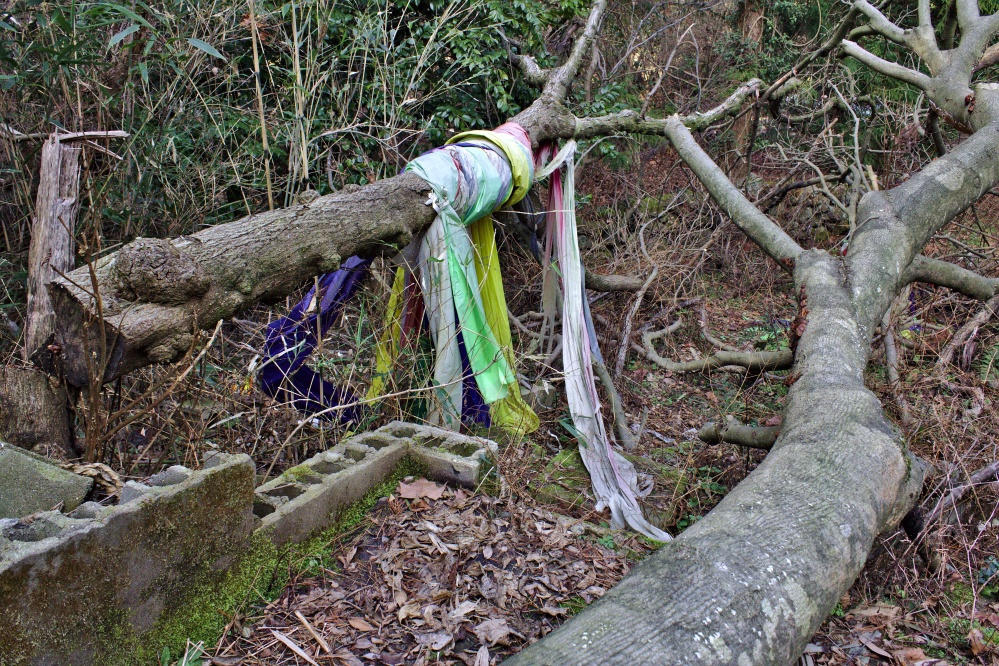
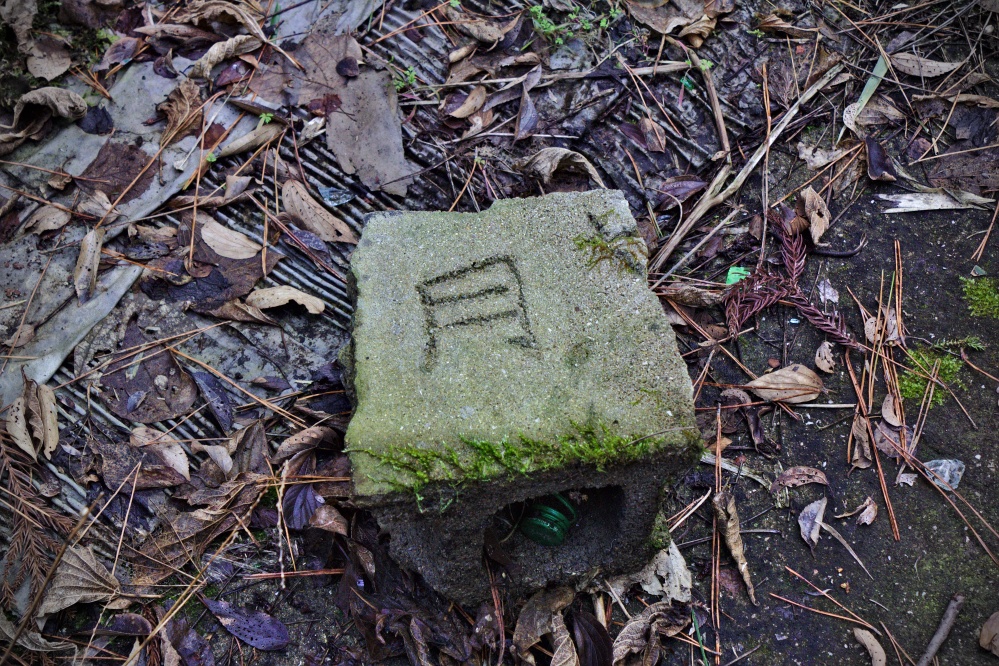
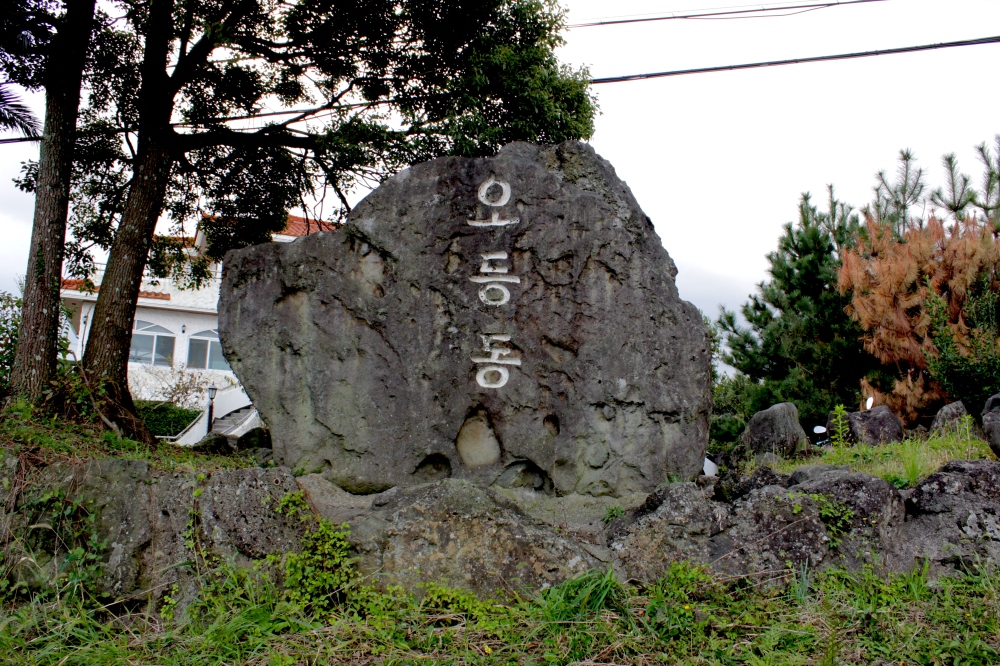
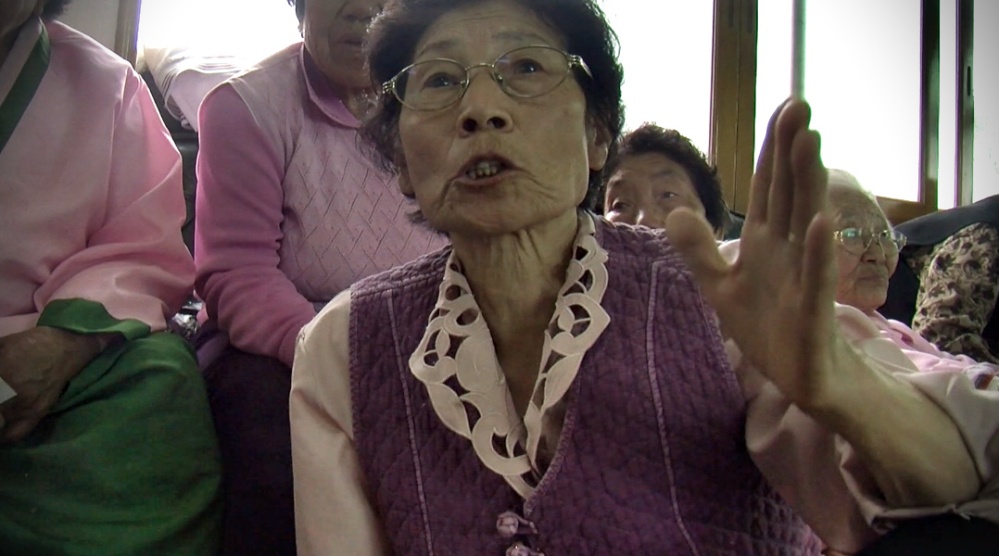
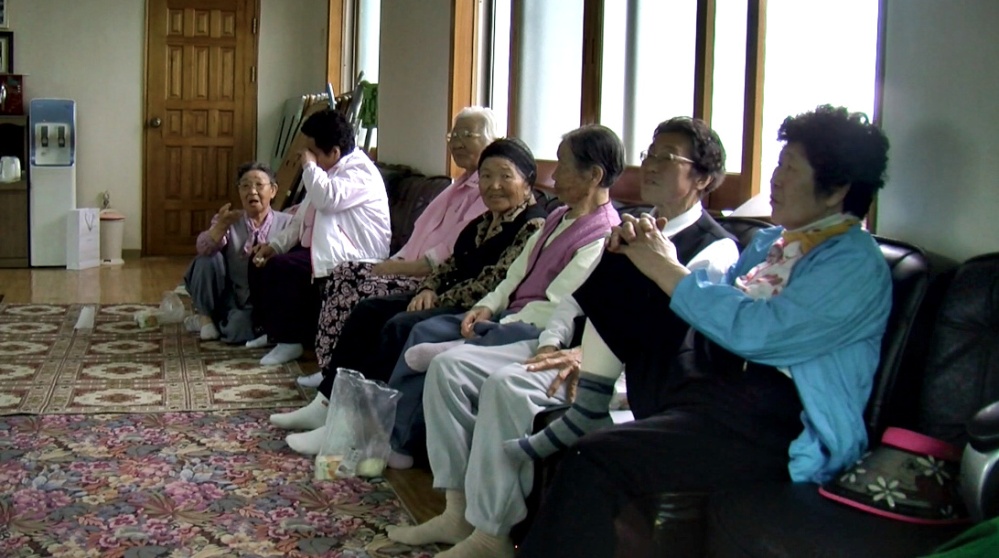
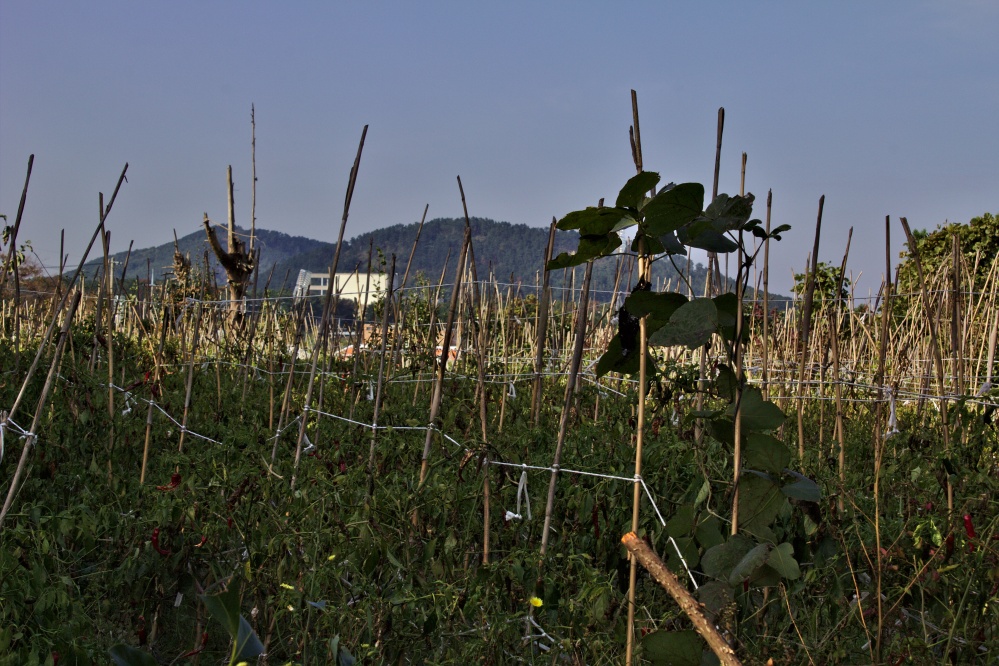
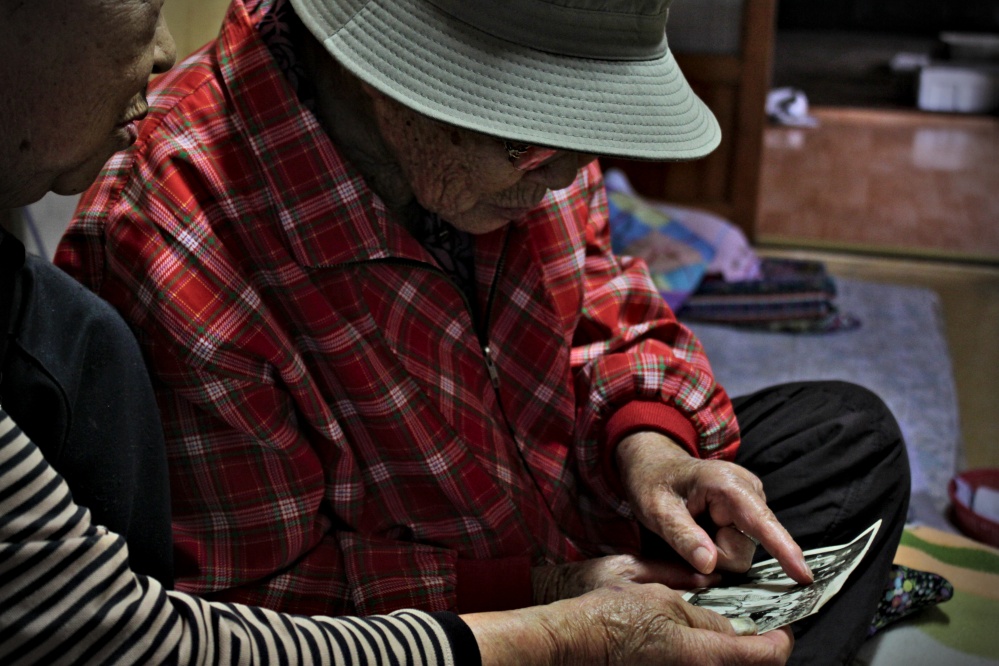
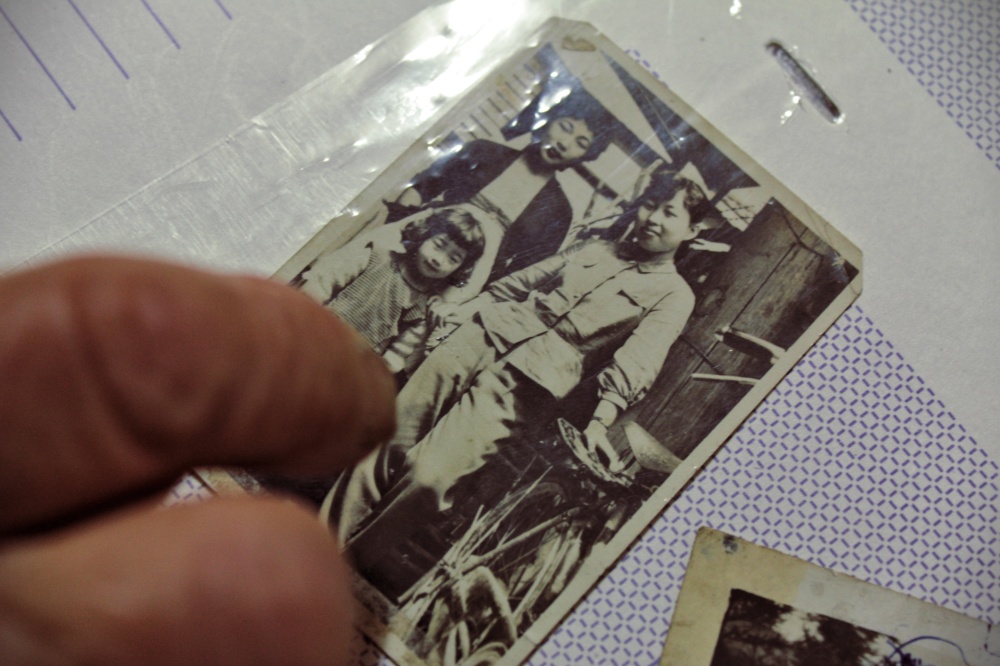
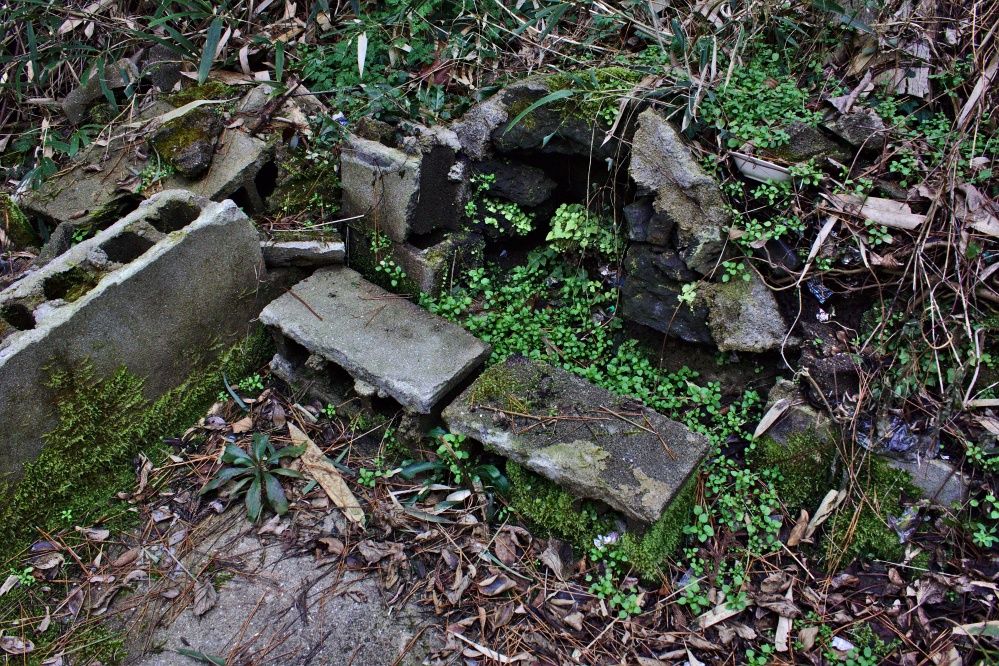
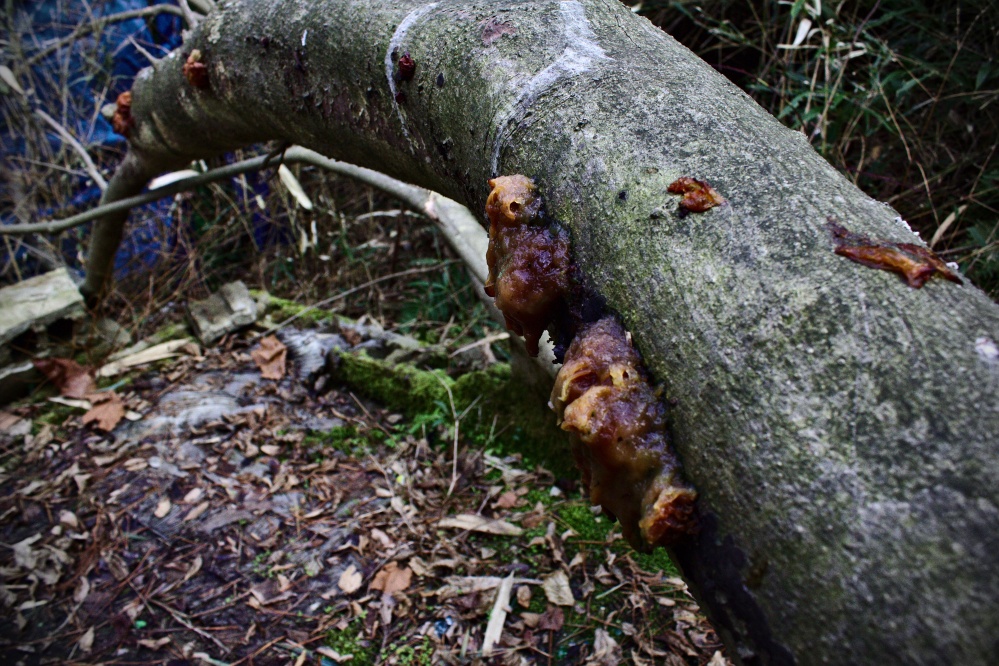
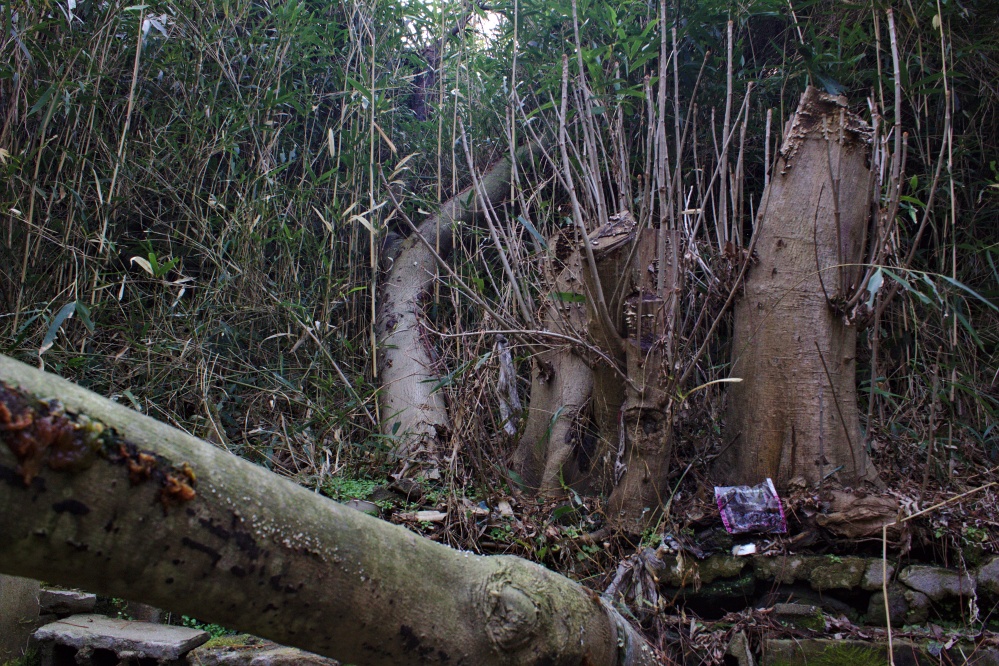
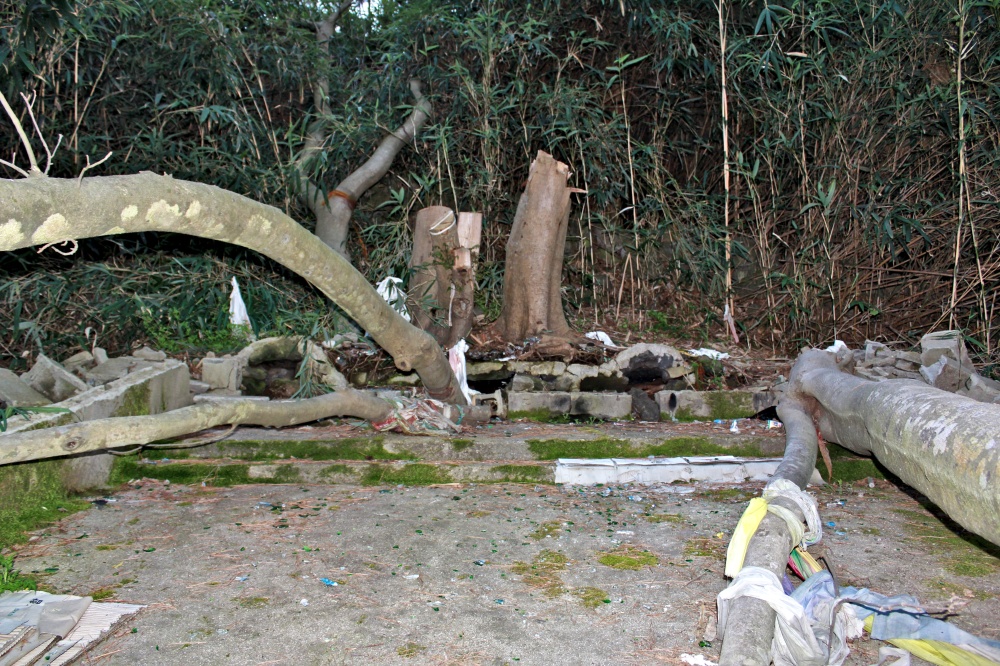
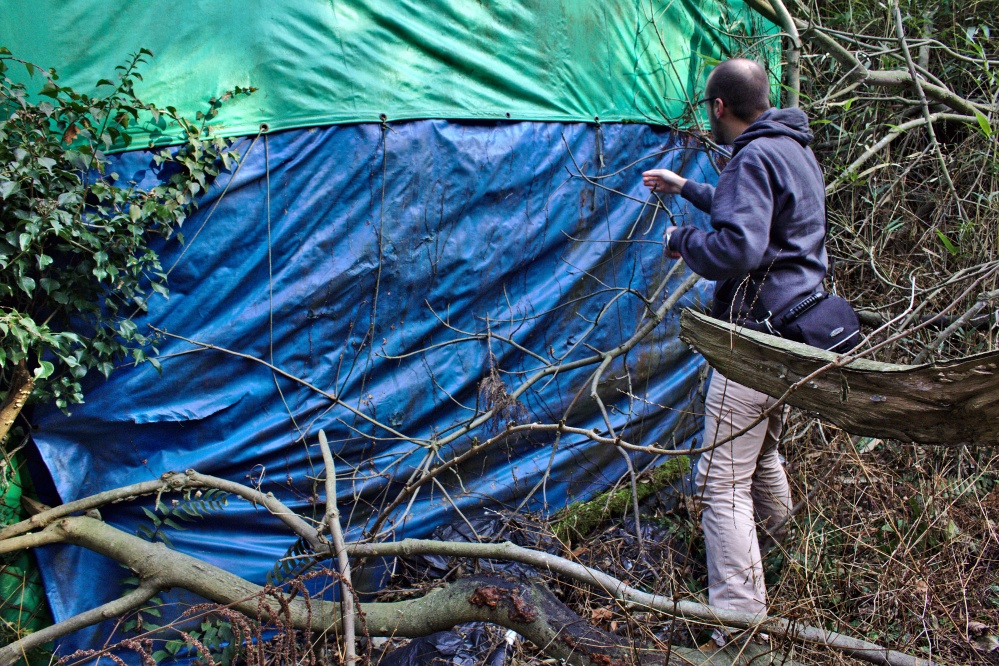
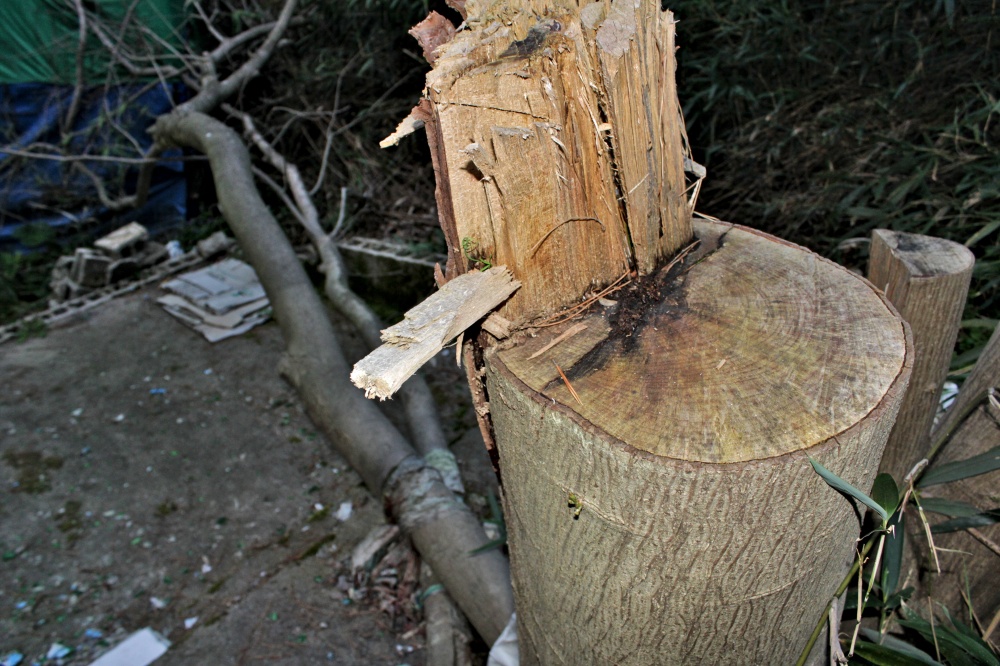
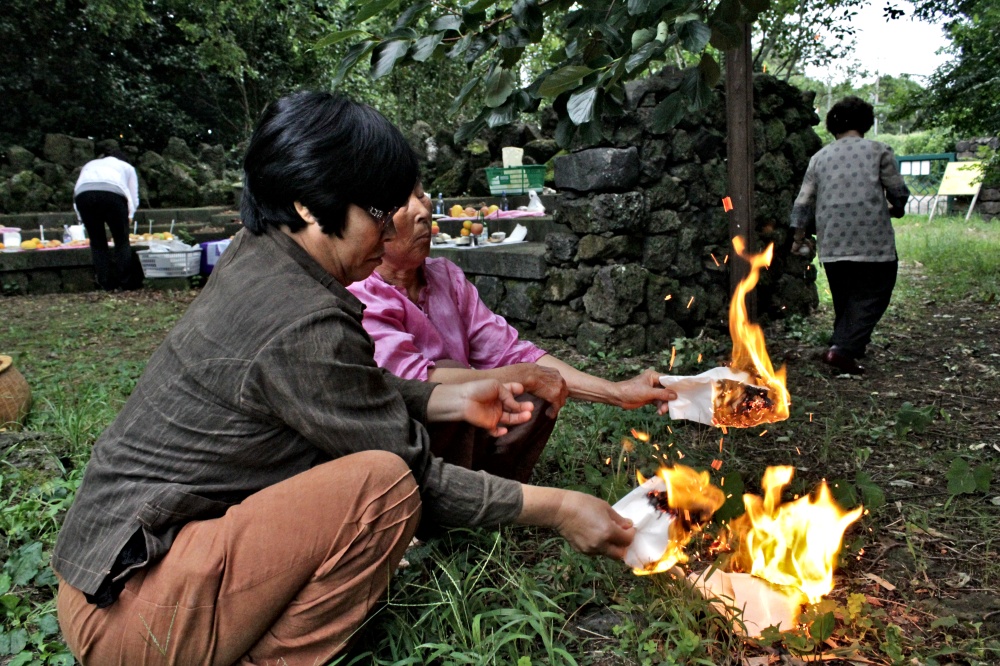
Hi, Joey! Is this the story of your visiting for your documentary before or recent visiting?
Jan. 28th 2015 is the date for uploading? Do you want to inform this to the newspaper reporter to let people think on this problem? Then I will give this blog information to them.
LikeLiked by 1 person
Hi Hye Kyoung, this is the first post of the blog and it covers my experience of my visiting the village over the last year, from when I first filmed there until now. That’d be great if you could pass it on to the reporter and to whoever else might be interested. Thanks for the comment.
LikeLike
I admire your passion for this!
I don’t know who would be interested in this problem but at least we all need to know of it at least in Jeju.
HyeKyoung
LikeLiked by 1 person